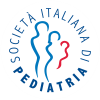List Q&A – The ninna ho project
What is ninna ho’s mission?
ninna ho aims at defending the rights of abandoned children by informing women who find themselves in difficulty to keep a newborn child of both their rights and those of the baby and by installing ‘baby hatches’ in a network of hospitals throughout the country as a concrete alternative to abandonment or infanticide. It is principally involved with medical institutions and hospitals.
I’m interested in adopting a legally abandoned child. What do I have to do to help an abandoned child find a home and family?
Generally children born in a hospital who are not recognized by their parents are adopted very quickly. You should present your request to adopt a child to the Juvenile Court in the locality where you are resident. The Court will select couples that they consider suitable to maintain and bring up one or more children from the waiting list. After a successful period of fostering the Court may proceed with the formal adoption.
In the case I were to be interested in sponsoring the installation of a ‘baby hatch’, how much would it cost?
The cost of installing a ‘baby hatch’ depends on the hospital concerned, on the need to construct the room isolating the hatch and on any necessary work on the electrical system to connect the alarm to the maternity ward and the intensive care unit. The Managing Director of the hospital should be involved to coordinate the work at the hospital, planning permission may have to be filed for with the local authorities and a supplier for the thermal cot selected for installation in the hatch. However, the average investment could be considered around 60.000.00 Euros and the installation work may take several months.
I would like to help with the project. How can I assist?
You can help by simply passing our message by word of mouth, sharing our video on your Facebook page or favorite social media or by sending the link to our website to your friends and contacts. You may like to distribute our leaflet in local medical consultancies, churches, chemists, social centers, voluntary associations or health centres. Material is available from the organizers (info@ninnaho.org) who can advise you on the distribution.
What are ‘baby hatches’ and where can they be found?
The ‘baby hatches’ are a modern version of the foundling wheel used in monasteries in the middle ages. They are installed in such a way that in extreme conditions mothers who cannot or do not want to give birth in hospital and who cannot or do not want to recognize their child, can leave the baby anonymously and in complete security. The ‘baby hatches’ are equipped with a thermal cot and an alarm system to inform the medical staff immediately a baby is laid inside. The ‘baby hatches’ donated by ninna ho, as opposed to many others in Italy, are installed nearby the maternity department of a hospital where they are discretely positioned so the mother can leave the baby without being seen, but can still rely on all the emergency life-support systems necessary to save the child.
The following hospitals have a ninna ho ‘baby hatch’:
- Azienda Ospedaliera Universitaria Federico II di Napoli
- Ospedale del Ponte di Varese
- Azienda Ospedaliera di Padova
- Azienda Ospedaliero Universitaria di Parma,
- Azienda Ospedaliero-Universitaria Careggi di Firenze
The Fondazione IRCCS Cà Granda Ospedale Maggiore Policlinico in Milan and the Policlinico Casilino in Rome also have ‘baby hatches’ and adhere to the ninna ho communications campaign.
I would like to make a donation to ninna ho. How should I do this?
Donations can be paid directly into the ninna ho account:
Fondazione Francesca Rava – N.P.H. Italia Onlus
IBAN current account: IT47 L030 6234 2100 0000 1000 000
Banca Mediolanum SpA – Ag. 1 di Basiglio (MI)
BIC: MEDBITMM 8
Please state the motivation as “Donation to the ninna ho project”.
You will receive a formal receipt for deduction of the donation in you tax returns.
How are the funds raised for the project ninna ho employed?
Currently ninna ho is working on a communications program aimed at informing women in difficulty on the current laws in Italy concerning the rights of mother and child in the case of giving birth anonymously. The campaign requires:
- Print and distribution of material informing target groups that Italian law guarantees all women the right to give birth in any hospital anonymously
- The maintenance of our website and the set-up of social networks
- The production of audio-visual material.
Where can pregnant women go to receive advice when they believe they are in difficulty to keep their baby?
They can go to the maternity department in any Italian hospital or to any local community health centre.







